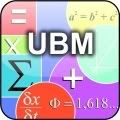Parabéns
Romero Morais conseguiu resolver este desafio!
Resolução:
Temos:
$$N = P_y = m.g cos\theta$$
$$Fat = \mu . N = \mu . m.g.cos\theta$$
$$P_x = m.g.sen\theta$$
$$d$$ é a distância genérica percorrida pelo bloco.
Trabalho na ida:
$$\tau_T = \Delta{E_c}$$
$$\tau_{Fat} + \tau_{P_x} + \tau_{P_y} + \tau_N = E_{cF} - E_{cI}$$
$$\tau_{Fat} + \tau_{P_x} + E_{cF} = E_{cF} - E_{cI}$$
$$\tau_{Fat} + \tau_{P_x} = -E_{cI}$$
$$-\mu . m.g.cos\theta . d - m.g.sen\theta.d = -\frac{m.v^2}{2}$$
$$d = \frac{v^2}{2g(\mu cos\theta + sen\theta)}$$
Trabalho na volta:
$$\tau_T = \Delta{E_c}$$
$$\tau_{Fat} + \tau_{P_x} + \tau_{P_y} + \tau_N = E_{cF} - E_{cI}$$
$$\tau_{Fat} + \tau_{P_x} - E_{cI} = E_{cF} - E_{cI}$$
$$\tau_{Fat} +\tau_{P_x} = E_{cF}$$
$$-\mu.m.g.cos\theta.d + m.g.sen\theta.d = \frac{m.v^2}{2}(\div m)$$
$$-\mu.g.cos\theta \left[ \frac{V_0^2}{2g(\mu.cos\theta + sen\theta)}\right] + g.sen\theta \left[ \frac{V_0^2}{2g(\mu cos\theta + sen\theta)}\right] = \frac{V^2}{2}$$
$$V = V_0\sqrt{\frac{sen\theta - \mu cos\theta}{sen\theta + \mu cos\theta}}$$
Alternativa B.















0 comentários:
Postar um comentário